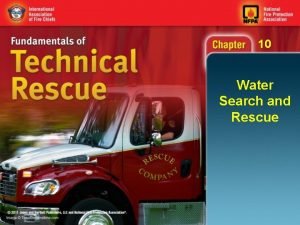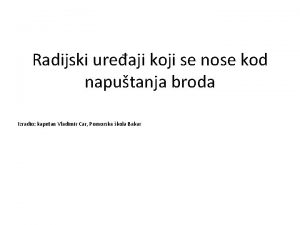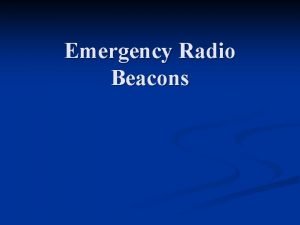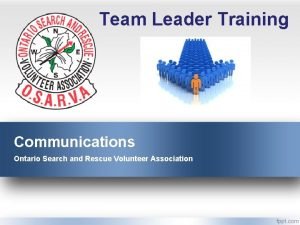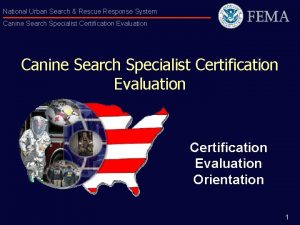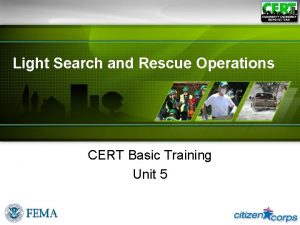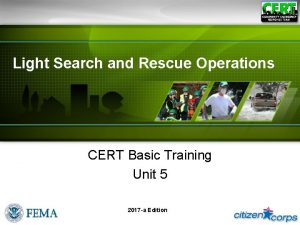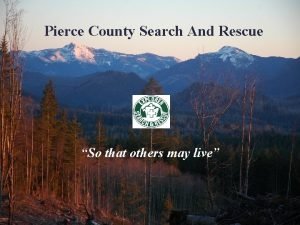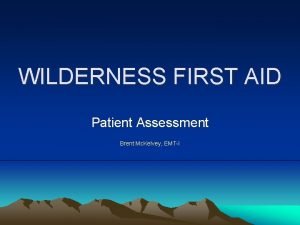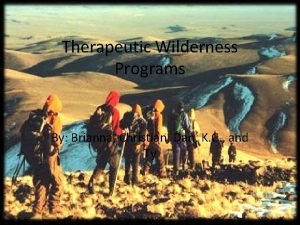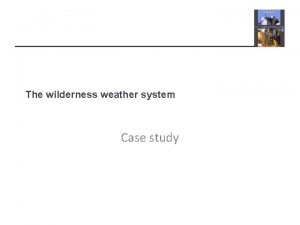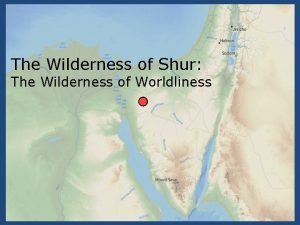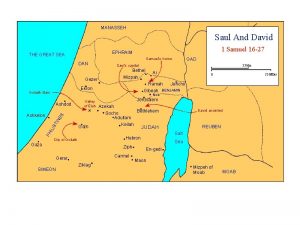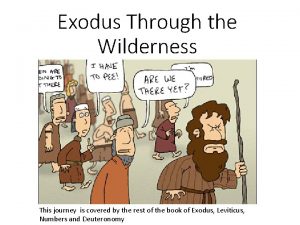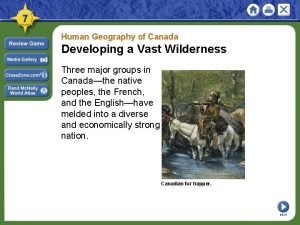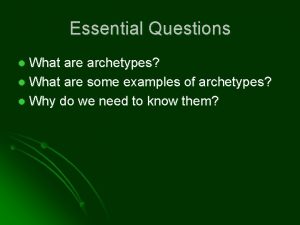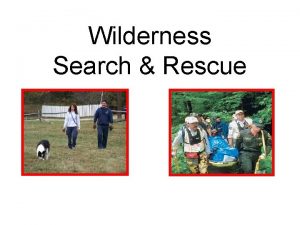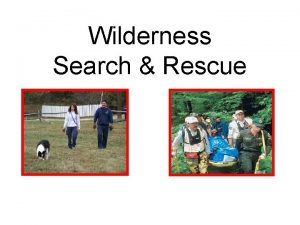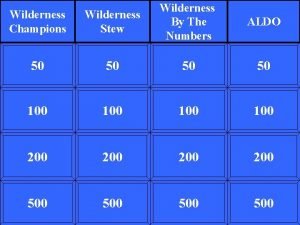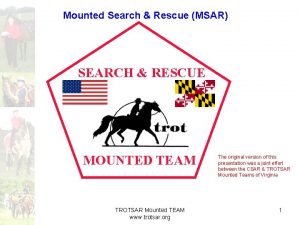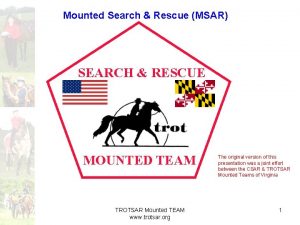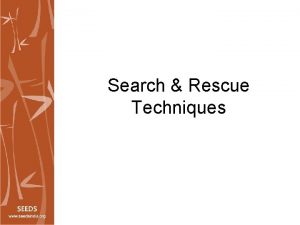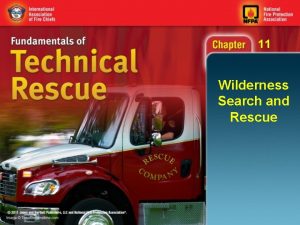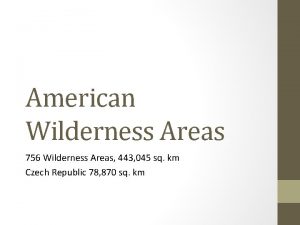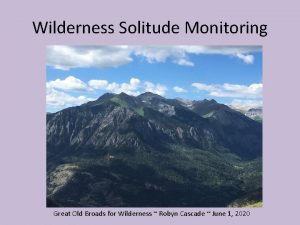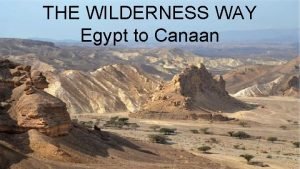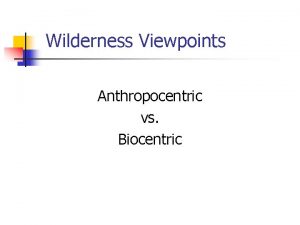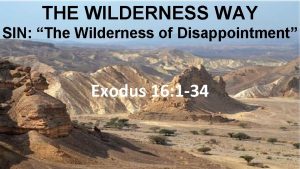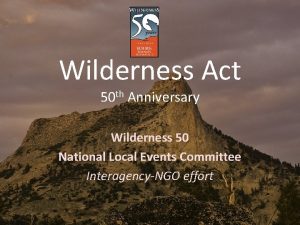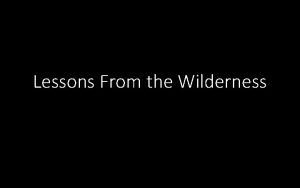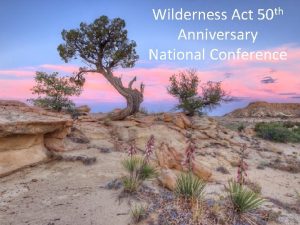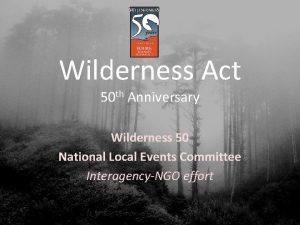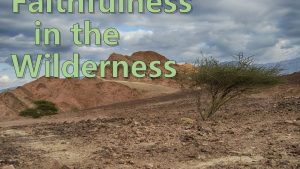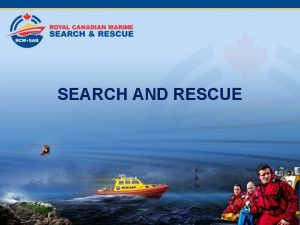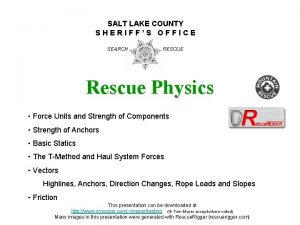Wilderness Search Rescue Introduction Who are we What
























- Slides: 24

Wilderness Search & Rescue

Introduction • Who are we? • What do we do? • How are we called out?

Objectives • • What is Wilderness Search & Rescue ? The steps to start a search Who to notify How to protect the scene Learn what are the resources available to you What will be the most effective resources What is the difference between trailing dogs and air-scenting dogs ?

Objectives • • • How do air-scent dogs work ? What can you do to assist with the search What gear to have for a search What is a TAF and what is a POD ? Map & Compass general information

Wilderness SAR • Search & Rescue – finding missing persons and bringing them out to safety • Wilderness areas are our main mission but we can respond to urban areas • Disaster dogs – FEMA. Specially trained dog teams for collapsed structures

DISASTER & COLLAPSE SEARCH

Steps to start a search • 911 Emergency call • Missing person report with Sheriff’s Dept. • Sheriff’s Dept. responds and calls for available resources • Call DEM (Department of Emergency Management) • Get picture of person and find out when person was last seen

How to protect a scene • Keep family members from trying to search themselves. Keep them in house to answer phone • Treat incident as a crime scene • Try to find LKP (last known position) ie: footprint • Use flagging tape to keep footprint from being destroyed by people walking around area • Try to set up a base away from person’s house • Do not allow a team to just walk through area without area being searched for more clues

Resources available • Fire Dept • Sheriff’s Dept. • Dept. of Corrections – Trailing dogs • Air-Scent Dogs (K-9 Alert) • Trained ground teams • Trained overhead teams

Most effective resources • Resources that can cover the greatest amount of area with the least chance of destroying evidence. ie: signcutters and dog teams. – Signcutters – people specially trained to find footprints or clues and follow to subject. – Dog teams – can cover large area effectively

Resources • Ground teams – a team made up of 4 to 5 people that form a line and walk through the woods at a close distance (Critical Spacing) • Four wheelers – good for containment but difficult to hear if subject is calling for help Also, can easily destroy clues on dirt roads • Overhead teams – organize and run search operations

Difference in dog teams • Trailing dogs – (Dept. of Corrections) follow a specific scent of a person. Do not follow step by step • Tracking dogs – follow crushed vegetation step by step • Air-scent dogs – follow skin particles that are picked up by the air the dog follows to scent source. Non- scent discriminating

How do dogs work ?

Air-scent dogs • Millions of our skin cells slough off and fall to the ground (approx 40, 000 p/min) • Wind can pick up scent and carry it for several hundred yards • Dogs are trained to use this scent and follow it to a person • Coning effect

Air-scent dogs

Air-scent dogs • They will find other people in the area • Dogs can work at night • Rain and water will not hinder dogs ability to locate people • Hot weather will make searching harder on the dogs (Chimney Effect) • Can find people hidden in heavy / dense brush

Several ways YOU can assist • Member of ground team • Keep accountability records • Help with communications • Member of an evacuation team • Provide medical treatment

Personal Gear • • Boots and long pants Backpack with water and food for you and dog Compass and GPS First-aid supplies for you, patient and the dog Shelter – trash bags Whistle, lighter and water purification tablets Items to survive at least (24) hours in woods

Documentation • POD – Probability of Detection – Def. ”Chances that an object will be detected if indeed it is there” – Things to consider… • • Day or night Open field or thick brush Distance apart from other team members Responsive or non-responsive subject

Documentation • TAF – Task Assignment Form – Form used in Virginia to document what areas are searched and how – Lists who is on search team, what areas to search and how to communicate with base – Lists safety information – Used for briefing and debriefing

Map & Compass

Map • Which way is north? – Look for major names printed in bold – Use compass to verify what you see – Be careful of what is around compass – Use GPS – UTM Grid – Read right then up

Summary • • The search is started by the Sheriff’s Dept. Resources are called in to assist Look for clues and protect them Become familiar with a TAF and how to report POD’s • Work as a team to reach the desired goal of finding the subject and evacuating them out

Thank You!!
 Antigentest åre
Antigentest åre Rethrog
Rethrog Epirb uređaj
Epirb uređaj Beacon
Beacon Ontario search and rescue volunteer association
Ontario search and rescue volunteer association Urban search and rescue markings
Urban search and rescue markings Light search and rescue operations
Light search and rescue operations Image search
Image search Pierce county search and rescue
Pierce county search and rescue First aid patient assessment
First aid patient assessment Sagewalk wilderness therapy camp
Sagewalk wilderness therapy camp Wilderness weather station activity diagram
Wilderness weather station activity diagram Shur
Shur Saul bible
Saul bible Cave where david hid from saul
Cave where david hid from saul The unfaithful wife character archetype examples
The unfaithful wife character archetype examples Fire vs ice archetype examples
Fire vs ice archetype examples Wilderness weather station case study
Wilderness weather station case study Israelites wilderness journey map
Israelites wilderness journey map Canada wilderness
Canada wilderness Innate wisdom vs educated stupidity archetype
Innate wisdom vs educated stupidity archetype Chapter 7 developing a vast wilderness
Chapter 7 developing a vast wilderness The unfaithful wife archetype examples
The unfaithful wife archetype examples Innate wisdom vs educated stupidity archetype examples
Innate wisdom vs educated stupidity archetype examples Platonic ideal archetype
Platonic ideal archetype

